|
|
 Comparing
Tanegashima and Hokkaido Comparing
Tanegashima and Hokkaido
Well once again we are talking about moving. Our little
island, Tanegashima, has changed dramatically over the last
few years, and the prospects for the future don't look much
better. Popular events spanning decades have been
permanently cancelled and almost nobody goes to the beaches
anymore, many of which are no longer maintained and are
cluttered with trash. In addition, the building of an
American military FCLP training base on the neighboring
Mageshima island has divided this island community and
resulted in the installation of hundreds of metal container
houses along the western coastline which are housing
thousands of construction workers who came here from all
over Japan for the excessive amount of money they're making
to quickly get the training base finished. Many of these
workers are tough, almost yakusa looking dudes, who are tatooed,
really tough looking, and who have been removed
from, and permanently excluded from, many bars on the
island due to fighting. In addition, thanks to human induced
climate change, the island hit 37 degrees C (almost 100 degrees F) for a few
weeks with close to 100% humidity, temperatures unheard of ten years ago when we
moved here.
We moved to this island in 2014 and at that time it
was the perfect place to raise a family. A very small town
atmosphere where neighbors would sit along a country road
eating freshly baked sweet potatoes and drink beer
together. There was plenty of stuff to do, friendly people,
clean beaches, and a sense of community....not anymore. The
decision to move is not a decision we are taking lightly.
This would be our 5th move, 3 internationally, we will have
made in less then 15 years. Doing the math, that averages
out to a move every three years....unheard of unless you're
a military family. |
 Anyway,
out of 47 prefectures in Japan, Hokkaido is at the top of
the list for our move. This is amazing since I vowed to not
ever move back to a cold climate or to a city (um actually
we plan to buy a property outside of the city) again. Why
Hokkaido?....um, why not? Hokkaido has that "go west young
man" vibe to it reminiscent of the California Gold Rush of
the 1800's in America. The feeling of going where no one has
gone before (obvious star trek reference), um except for the
over five million people already there. Beautiful scenery,
great food, affordable housing, and four seasons which is a
particular draw for the kids who really want to play in the
snow....they didn't spend 20 years in Buffalo, New York, lol.
Anyway, I tend to find happiness wherever I go, and the kids
are definitely wanting a change. Anyway,
out of 47 prefectures in Japan, Hokkaido is at the top of
the list for our move. This is amazing since I vowed to not
ever move back to a cold climate or to a city (um actually
we plan to buy a property outside of the city) again. Why
Hokkaido?....um, why not? Hokkaido has that "go west young
man" vibe to it reminiscent of the California Gold Rush of
the 1800's in America. The feeling of going where no one has
gone before (obvious star trek reference), um except for the
over five million people already there. Beautiful scenery,
great food, affordable housing, and four seasons which is a
particular draw for the kids who really want to play in the
snow....they didn't spend 20 years in Buffalo, New York, lol.
Anyway, I tend to find happiness wherever I go, and the kids
are definitely wanting a change.
The decision to stay on the island or move to Hokkaido will
depend on many factors, mostly those things that cannot be
controlled, ie. earthquake probability, climate and weather,
housing, cost of living, etc. The smaller details are easy
to work out once we get there if we decide to move. This page
will be added to continuously up until the decision is made.
Links to useful sites contributing to our decision will be
listed at the bottom of the page. And now let the games
begin. |
|
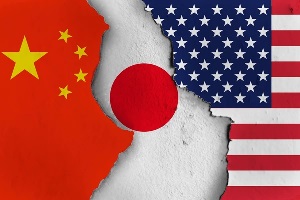 War Probability War Probability
Japan has increased their defense budget from 1% to 2%, the
largest increase since the Second World War. Japan is in the
process of building a huge military base on neighboring
Mageshima Island. The Japanese Ministry of Defense is
purchasing hundreds of missiles which will be installed on
the southern island on Japan, all the way from Okinawa to
Tanegashima. The threat of an all out war between China and
America continues to be an ever increasing possibility, with
the battles inevitably being fought on Japanese soil, in
particular, the Ryukyu Island chain. This, along with even
the presence of military bases on Tanegashima, are the main
reasons we decided to move. Already the island is beginning
to resemble Okinawa in many ways including: the sound of
aircraft (almost none before), increased traffic, bar
fights, and rude young people at the beaches. Tanegashima is
no longer the quiet, laid back, family friendly place it was
only a few years ago.
Click here to read about how the new military base has affected Tanegashima. |
 Military Bases Military Bases
The Japan Self-Defense Forces (JSDF, Japanese: 自衛隊; Hepburn:
Jieitai), also known as the Japanese Armed Forces, are the
unified military forces of Japan. Established in 1954, the
JSDF comprises the Japan Ground Self-Defense Force, the
Japan Maritime Self-Defense Force, and the Japan Air
Self-Defense Force. They are controlled by the Ministry of
Defense with the Prime Minister as commander-in-chief.
Although Hokkaido has a total of 42 JSDF bases (see below),
most of them serve as radar, or lookout stations, and are
most likely not a target or area of concern in the event of
a war. In addition, most of the bases (39) are located
around Sapporo or between Sapporo and Ashikawa to the north with only 3 bases around
Hakodate including: JASDF Okushiri Island Sub Base,
JASDF Yakumo Sub Base, JMSDF Sub Area Activity Hakodate.
It should be noted that the Hakodate base consists of a
few apparently administrative buildings with no military
capabilities, and therefore, would not be considered a
viable target in the event of a war. Click the links
below to see the location of each base. |
|
Japan Self-Defense Forces (JSDF) bases in Hokkaido |
|
|
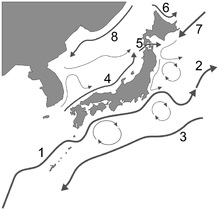 Fukushima Waste Fukushima Waste
I was looking for fishing information for Hokkaido and this
showed up in the news.
Hokkaido fish kill unrelated to release of Fukushima Daiichi treated water.
It turns out that on December 7, 2023, thousands of dead
sardines and mackerel washed up on the coast of Hakodate
City in Hokkaido. Yup, something else to worry about....or
is it? I began researching the possibility of contaminated
fish around the southern coastline of Hokkaido. The graphic shows the
following:
The ocean currents surrounding the Japanese archipelago: 1.
Kuroshio 2. Kuroshio extension 3. Kuroshio countercurrent 4.
Tsushima Current 5. Tsugaru Current 6. Sōya Current 7.
Oyashio 8. Liman Current.
The Kuroshio Current moves northward along the coastline of
Japan and then turns away from the country almost exactly at
the same latitude of the Fukushima Nuclear Facility. The
current then turns slightly northward and becomes the
Kuroshio countercurrent and then heads out into the open
ocean and away from Hokkaido. In addition, the Tsugaru
Current, which flows through the Tsugaru Strait, does so in
such a manner that it would push contaminants away from
Hokkaido, in particular, the location around Hakodate. The
only concern is the Oyashio Current which could have a
slight counter effect. Overall, the fishing in the ocean
around southern Hokkaido should be okay.
This study looks at the Accelerated spread of Fukushima’s waste water by ocean circulation
and suggests contamination could reach the northern reaches
of the Japan Sea, a bit of a worry point. The conclusion is,
really not sure who to believe, but for a family who eat a
lot of fish, this might be time for a leap of faith and not
worry about this particular factor. |
|
|
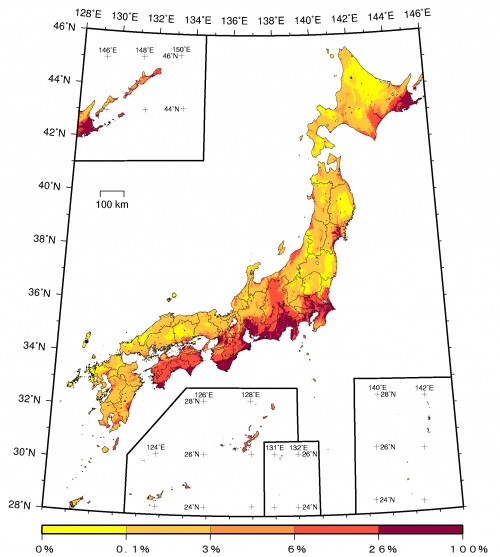 Earthquake
Probability Earthquake
Probability
The map to the left shows the probability of an earthquake
measuring 6.0 or higher within the next 30 years....map
courtesy of the Japan Seismic Hazard Information Station.
After being in numerous earthquakes, both in California and
Japan, I decided to put this at the top of the list in the
decision to move. Funny thing, as a former geology major in
college, I find earthquakes fascinating and exciting....and
then reality sinks in. During an earthquake, my immediate
reaction is "whoa cool", and then a few seconds later, when
things begin flying off the shelves, my reaction turns to
"oh shit", and then wondering where the earthquake is
centered and how strong the earthquake is. Either way this
became a strong consideration for the safety of my family in
deciding where to move.
Tanegashima is within the 6-26% range. The section of
Hokkaido where we want to move, the southern tip around
Hakodate city is within the 0-3% range. Hokkaido is the
better choice.
Click for full size map
(opens in new tab), then click on map again to enlarge |
 Climate
and Weather Climate
and Weather
This factor is much more problematic than looking at an
earthquake map. A lot of things to consider here, in
particular, human caused climate change. This Summer on the
island was hell (understatement) with temperatures far
exceeding last Summer and the island hitting 37C (98.6F) for
several weeks with temperatures only cooling to about 30C
(86.0F) at night and extremely humid. The monsoon or rainy season on the island
usually ends around the middle of July when a dome of high
pressure builds over Japan and pushes the persistent
stationary front to the North, at which time day and night
temperatures stabilize for a couple of months with daily temperature
variations between day and night of only a few degrees. This
means miserable days and uncomfortable nights. Because of
this I gave in and told the wifey we could get a full size
air conditioning unit installed next year. This means at
least three months in the house in a controlled environment.
This then became a factor in the moving decision. Stay on
the island and spend three miserably hot months in an air
conditioned house or move to Hokkaido and spend three
miserably cold months in a heated house. I picked the latter
option, mostly due to future considerations of global
temperatures increasing due to climate change. It makes more
sense now to move to a place which is cool and getting
warmer than to stay in a place that is hot and getting
hotter. In addition, the thought of being in a climate with
four distinct seasons (I grew up and spent 20 years in
Buffalo, New York) is very appealing to my kids. They get
the much cooler Summers spent kayaking and hiking while
also getting to participate in sports like snowboarding,
skiing, and ice skating.
Additional note: Hokkaido DOES NOT get affected by the month
long, or more, rainy season "AKA tsuyu" and does not get
affected by typhoons, although the occasional tropical storm
might make its way up there.
|
|
|
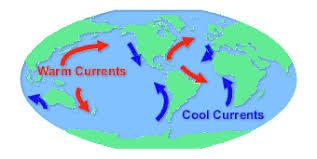 Ocean
Temperature Ocean
Temperature
This might seem a bit trivial to many of you but pretty
important to this family since we are used to spending a lot
of time at the beaches during the Summers. The fact is that
kayak fishing and other activities will be much more limited
in Hokkaido due to the lower ocean temperatures than on
Tanegashima. The cost of purchasing wet suits and other gear
to compensate for these lower ocean temperatures will need
to be factored in the decision to move. Overall though, this
particular criteria is more in favor of Tanegashima than
Hokkaido.
Information obtained from Google search:
What is the best water temperature for swimming in the
ocean?
There's no real optimal temperature, but many people
feel “comfortable” swimming in water that is 70° to 78°
Fahrenheit.
The following information was obtained from
SeaTemperature.org
on August 10, 2024.
Nishinoomote City on Tanegashima
The Nishinoomote Water Temperature (Today) 10th Aug 2024 was
30.3°C / 86.6°F and described as "The water will feel
unpleasantly warm (stifling). May be a little too warm for
any kind of activity, particularly if sunny."
Hakodate City in Hokkaido
The Hakodate Water Temperature (Today) 10th Aug 2024 was
23.1°C / 73.5°F and described as "The water will feel warm
(balmy). Most people will be OK with just bathers / swimming
costume at this temperature. If you intend to stay in the
water for a while a thin shorty wetsuit will suffice." |
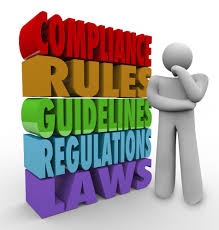 Rules
and Regulations Rules
and Regulations
This is another factor that might not be important to most
people, but again, really important to us. We spend much of
our time outside doing a wide variety of activities.
Tanegashima has relatively few rules and regulations, and
even the ones that exist are not enforced. Things like
camping on the beaches, drinking alcohol in public, etc. are
allowed without question. Hokkaido, on the other hand, seems
to be much more regulated based on initial investigation.
For example, it is totally illegal to launch a kayak from a
public fishing port. The safety issues inherent in this
regulation are obvious but limits our freedom to some
extent. Tanegashima definitely has the advantage when it
comes to rules and regulations, or lack thereof. |
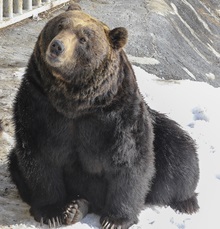 Unsafe
Creatures Unsafe
Creatures
Well we watched a video last night which certainly put a bit
of a damper on the move to Hokkaido and resulted in
Tanegashima winning for this particular moving factor. A
huge Ussuri brown bear (see picture of an example) entered a
residential neighborhood and severely injured some people.
The bear was shot and killed but the damage was already
done. Although very rare for this type of thing to happen,
it put things in a different perspective. A few years ago we
lived in the mountains of San Diego, California and were
limited in what we could thanks to the mountain lion
population and now the thought of even larger, and possibly
meaner bears, was something we were not prepared to deal
with. Anyway, we plan to do a lot more research about this.
Bear sighting map |
|
Summary of Factors
The following tables summarizes the factors described
above....pretty straightforward.
GREEN means
good.
RED means not
good.
Note: I am not a statistician but tried, as much as
possible, to set this table up in a weighted manner, putting
the most important factors first and the more trivial
factors last. That said, the order might be quite different
for those of you reading this page. |
|
Factor |
Comments |
Tanegashima |
Hokkaido |
| War Probability
* |
Tanegashima less
safe due to FCLP base on Mageshima. |
|
|
| Military Bases * |
Mageshima base
will likely extend to Tanegashima. |
|
|
| Fukushima Waste |
Tanegashima is
far south of Fukushima. |
|
|
| Earthquake
Probability |
Hokkaido has
less chance of a strong earthquake. |
|
|
| Climate and
Weather |
Tanegashima too
hot. Hokkaido too cold. Toss up. |
|
|
| Four Seasons |
Hokkaido has the
beauty of four seasons. |
|
|
| Natural Beauty |
Hokkaido is
known for its natural environment. |
|
|
| Beaches |
Beaches in both
places not similar but all are beautiful. |
|
|
| Beach Pollution |
Tanegashima has
extremely polluted beaches, mostly trash. |
|
|
| Fishing |
Probably similar
in both places but with different fish |
|
|
| Ocean
Temperature |
Tanegashima
allows year round ocean activities. |
|
|
| Rules and
Regulations |
Tanegashima has
far less rules and regulations. |
|
|
| Health Services |
Hokkaido has 3
large cities and better services. |
|
|
| Housing |
Hokkaido had
hundreds of houses under $100,000. |
|
|
| Utilities |
Tanegashima
Summer cooling is much cheaper. |
|
|
| Food Prices |
Tanegashima
farming is possible year round. |
|
|
| Transportation |
Hokkaido has
much better public transportation. |
|
|
| Transportation
Costs |
Tanegashima is a
small island with less commuting costs. |
|
|
| Events |
Hokkaido by far
has more events in all seasons. |
|
|
| Cultural
Amenities |
Hokkaido has
Sapporo, a cosmopolitan city. |
|
|
| Food Quality |
Hokkaido has a
wide variety of local cuisine. |
|
|
| Friendly People
** |
Hokkaido blogs
all mention the friendliness of the people. |
|
|
| Educated People |
Hokkaido has
numerous schools and quality universities. |
|
|
| Unsafe Creatures |
Hokkaido Ussuri
brown bears
are an issue. |
|
|
|
| * War Probability and Military base
factors are partially based on conjecture. The military
base on Mageshima IS currently being built, while the
unknowns are the extent to which that base will extend
to Tanegashima and whether or not a war involving China,
the U.S., and Japan will evolve within the next few
years. |
| ** The people on Tanegashima were
friendly as well, before the Mageshima FCLP military
base began construction. The base has divided the island
community and the tension on the island is very evident. |
|

